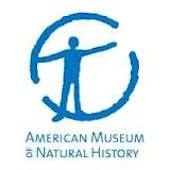
American Museum of Natural History

The American Museum of Natural History (abbreviated as AMNH), located on the Upper West Side of Manhattan in New York City is one of the largest and most celebrated museums in the world. Located in park-like grounds across the street from Central Park, the museum complex contains 27 interconnected buildings housing 45 permanent exhibition halls, in addition to a planetarium and a library. The museum collections contain over 32 billion specimens of plants, humans, animals, fossils, minerals, rocks, meteorites, and human cultural artifacts, of which only a small fraction can be displayed at any given time, and occupies 1,600,000 square feet (150,000 m2). The Museum has a full-time scientific staff of 225, sponsors over 120 special field expeditions each year, and averages about 5m visits annually.
Home to more than 200 scientists who work across the broad disciplines of anthropology, astrophysics, biology, Earth and planetary sciences, and paleontology, as well as to one of the world’s most extraordinary collections of specimens and artifacts, the Museum is a leading research institution with world-class facilities and researchers who carry out 100 field expeditions around the world each year. Through the Richard Gilder Graduate School, it is the only US museum to award the PhD degree.
Links
Displaying all articles





